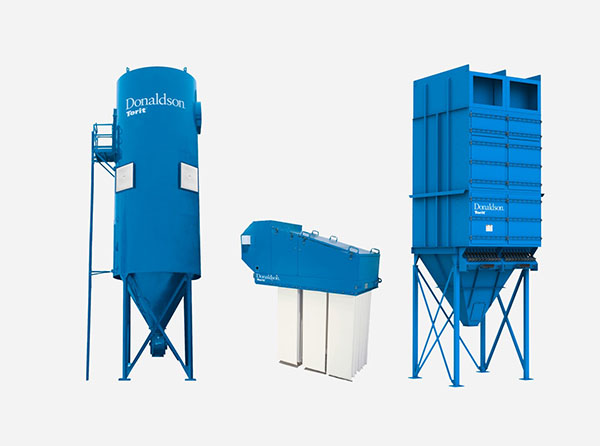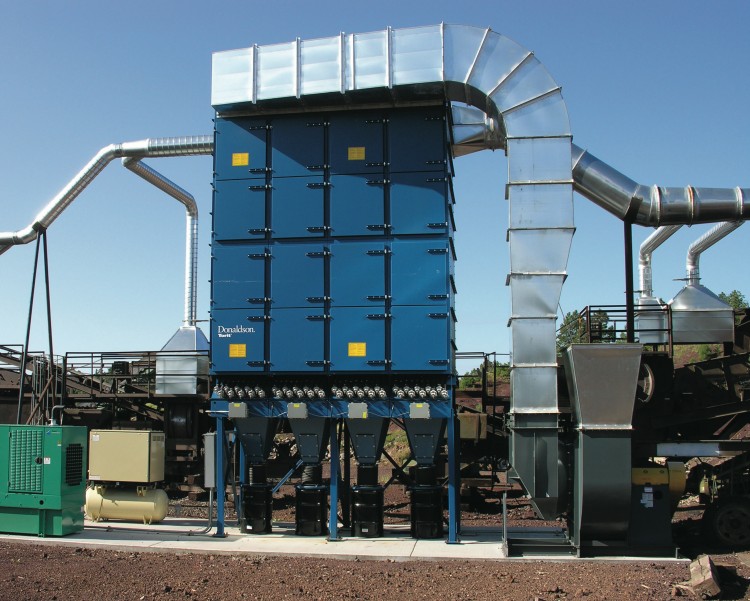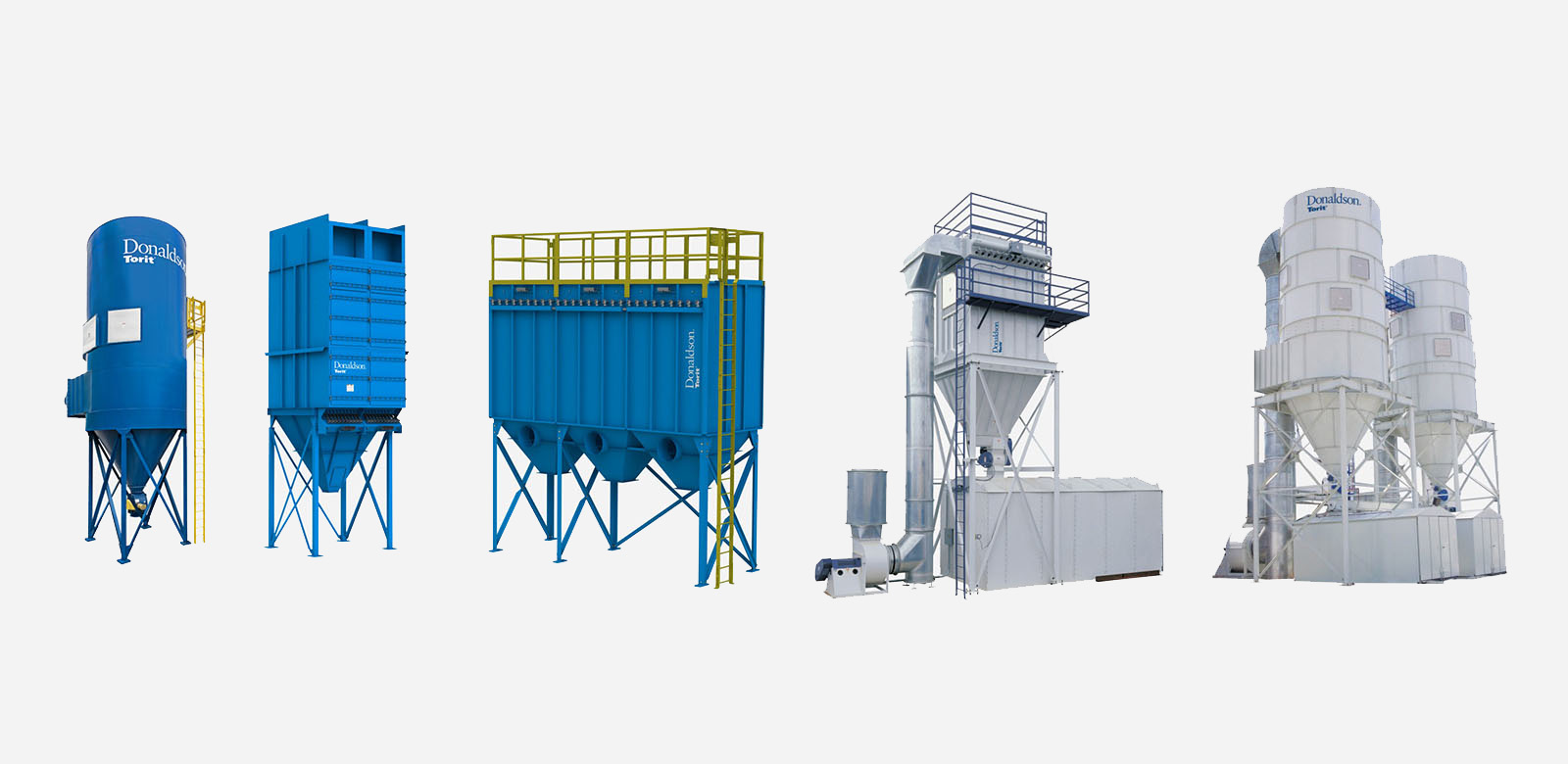Industrial Baghouse Collectors
Baghouse dust collectors are used to filter dirty air in an industrial workplace. Usually, baghouses are used when the particles are larger, the dust load is heavy, or the air temperature is above 250 degrees Fahrenheit. The felt filters used in baghouse dust collector have a longer lifespan than cartridge collectors. Baghouses are a good multi-purpose dust collector system that can be used in a variety of industrial settings.
How does a baghouse dust collector work? Dusty air is pulled by a fan into the dust collector, where felt bags trap the dust from the air. Most baghouse collectors use between 6 and 900 felt bags. These bags are cleaned of dust using different processes, each of which deposits the dust into a collection hopper for discharge. Cleaned air exits the dust collector, and the process continues.
Applications
- Woodworking
- Agriculture and Grain
- Metalworking
- Steel Production
- Abrasive Blasting
- Mining
- Cement and Concrete
- Pharmaceutical


Brands
- Donaldson Torit
- IVEC Systems
- Filter 1
Baghouse dust collectors are highly efficient and cost-effective for dust collection in most general applications. The filter bags are usually made from felted (non-woven) or woven materials. Baghouse filters are almost always long, cylindrical tubes, either supported at the top and bottom or by an internal frame. Dust is collected inside or outside the baghouse filter depending on the airflow design.
Types of Baghouse Collectors
Baghouse dust collectors are often referred to by their cleaning method. The three most common baghouse cleaning systems are pulse-jet, shaker, and reverse-air. Each of these baghouse types are described below.
Mechanical Shaker Baghouse
In a mechanical shaker baghouse, tubular fabric filter bags are attached to a cell plate at the bottom and attached securely at the top of the collector. Dirty air enters through the bottom of the collector and is gathered on the inner layer of the filter bags. Periodically, the airflow to the container is taken completely offline, and the bags are shaken to release the dust from the filters. The dust falls into a collection hopper. This type of baghouse is often used in mining applications. The air to cloth ratio is high for this design, so much space is required for this type of collector.
Reverse Air Baghouse
With a reverse air baghouse, dirty air enters the chamber and dust is collected on the outside of the bags. Support cages keep the filter bags from collapsing under pressure and maintain their shape. The bags are compartmentalized in different sections, so cleaning can occur in some sections, while dust collection continues in other sections. During a cleaning cycle, a fan blows clean air into the chamber in a reverse direction, pressurizing the compartment. This causes the dust “pancake” on the outside of the bags to crack as the shape of the bag partially collapses. The dust falls gently into a collection hopper. The reverse air is turned off and the regular flow of dirty air is turned back online. Space requirements for reverse air baghouses are roughly the same as shaker baghouses, but maintenance requirements are slightly higher. Filters may last longer than in a shaker baghouse.
Pulse Jet Baghouse
The pulse jet (or reverse pulse) baghouse requires no downtime for cleaning cycles. Filter bags are supported by a cage, and dirty air enters from below the bags, trapping dust on the outside of the filter bags. Clean air passes through the plenum side as exhaust. The bags are cleaned periodically by a short burst (or “pulse”) of compressed air travelling through blow pipes mounted above each bag. This pulse of accelerated air travels in the opposite direction from the dirty air flow, travelling the length of each bag, dislodging the caked dust, which falls into a hopper below. Pulse jet baghouse units are more efficient, as the air to cloth ratio is higher, continuous cleaning eliminates downtime, and costs are minimal besides the compressed air. Dust redistribution is also reduced. These units are usually not compartmentalized.
Don’t See What You’re Looking For?
Other Custom Solutions Are Available
Contact an applications specialist to get help with an air filtration solution for your facility or plant.

